

This is a short review for the game Dicey Dungeons, created by Terry Cavanagh and a small indie team in 2019. Dicey Dungeons is a roguelike game clearly inspired by Slay the Spire in which players attempt to battle their way through a series of short dungeons, leveling up their characters and obtaining more powerful equipment along the way before facing a final boss. The unique feature of Dicey Dungeons is that everything in this game revolves around dice instead of building a deck of cards. And I do mean EVERYTHING is based around dice, which are not just a gameplay mechanic but also serve as the basis for the game's six classes. Although Dicey Dungeons is a game that's small in scope, that works to its advantage in some respects since it means that there's no feature bloat or needless extras to be found here. If you're looking for a roguelike game that involves rolling dice with some cute character designs, this is a title that's worth the minimal purchase cost.
There are six classes in Dicey Dungeons which each have their own gameplay quirks. I'll run through each of them and include a link to YouTube footage of me playing each class:
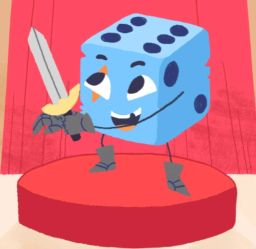
The Warrior is the most basic class based around hitting monsters as hard as possible. Most of the Warrior's equipment involves trying to roll high values on each dice and make use of 5s and 6s as much as possible. The Warrior's unique ability lets the class reroll individual dice up to three times on each round of combat, and the class limit break allows the Warrior to repeat an action for free. Typically this is a double attack of some kind: instead of stabbing for 6 damage with a sword, the Warrior can stab twice for 12 damage, that sort of thing. For the more difficult episodes, the Warrior also gets access to lots of shielding which comes in very handy and makes the Warrior one of the best characters. This is a simple class and a good introduction to the game for newcomers.

The Thief switches up the gameplay from the Warrior by relying on multiple precise stabs as opposed to a single big weapon swing. The Thief class is heavily based around the use of its unique Dagger weapon, which can be used an unlimited amount of times each round but can only use rolls of 1, 2, or 3. The Thief therefore wants to make use of its Lockpick equipment to split up high valued dice (4s and 5s and 6s) into lower valued components and then slash away with the Dagger. The Thief's limit break also gives the class four extra dice that all have a 1 value which is intended to synergize with the Dagger. Now this might not sound particularly strong however the Dagger gains +1 damage to all attacks when upgraded and suddenly all those 1s are hitting for 2 damage apiece - it makes a huge difference! The Thief's unique ability is also to steal away one random enemy ability on each round of combat, and this both gives the Thief a place to use some of those high dice rolls as well as scaling extremely well as the player increases the difficulty level. After all, as the monsters get stronger the Thief steals away their stronger abilities! The Thief is almost certainly the game's strongest class since it deals outstanding damage and can beat the game by relying on equipment which is guaranteed to appear on each run.
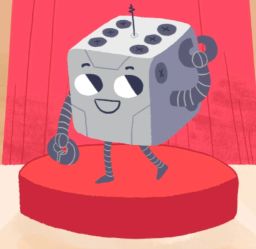
The Robot also rolls dice but does so in a completely different fashion. Rather than having a predetermined number of dice to roll, the Robot instead has a "CPU meter" that fills up over time, with a roll of 3 increasing the meter by 3 slots and so on. The Robot can roll an unlimited number of dice until hitting the top of the meter, operating under "The Price Is Right" rules whereby the player wants to get as close to the top of the meter as possible without exceeding it. Going over the CPU limit will disable all equipment for the rest of the round and leave the Robot unable to do anything. Thus players have to be careful about rolling dice and know when to stop without pushing things too far, a bit like playing a hand of Blackjack. If the Robot manages to hit the top of the meter exactly (for example rolling a 4 with 4 ticks of the meter remaining), then they hit the Jackpot and get to use an additional ability for free that turn. The Robot's limit break also gives the player a free Jackpot on that round when used. As far as the strength of the class goes, the Robot is kind of a wonky class but it nevertheless tends to be one of the better options, especially if the player can find one of the equipment that lowers the CPU meter to unlock more total dice rolls. Rolling more dice is always a good thing in this game and there are some Robot setups that can lean heavily into this mechanic.
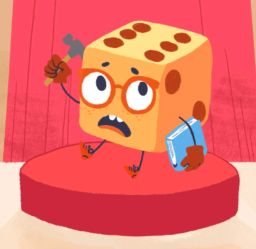
The Inventor's gimmick is that the class gets an additional "Gadget" that can be used for free in each round of combat. Most of these gadgets are quite strong and can do things like directly damage the enemy or inflict nasty status ailments or add more copies of the player's own dice. The tradeoff is that the Inventor has to sacrifice one piece of equipment after each completed battle which then becomes the gadget for the next fight. Which equipment gets sacrificed is a controlled bit of randomness: the Inventor picks out three pieces of current equipment and the player has to choose one of those three. Thus the player can basically protect two of their equipment and keep them around permanently while everything else in their inventory comes and goes over time. This is my least favorite class in the game due to the need to keep losing your hard-won equipment over and over again throughout the course of the run. It can be very powerful when played correctly, especially given the Inventor's limit break that turns all current dice into 6s, but the need to keep transitioning gear makes this one of the more complicated classes of the bunch.

The Witch has another unique gameplay mechanic in the form of her spellbook. Instead of carrying the normal assortment of equipment slots, the Witch instead has a spellbook in which a different spell can be tied to each of the six numerical values on a die. During combat, the Witch uses dice rolls to bring those spells out of the spellbook and into her hand, from which point they can be cast using a second dice. This is the crippling weakness of the Witch class: she has to roll the correct dice in order to bring out her spells (like needing the roll of a 3 if you have the Magic Missile spell keyed to the number 3) and then afterwards still needs to consume two dice for each spell, once to bring it out and once to cast it. Many of the spells are quite powerful in their functions but the Witch is always subject to more RNG luck than the other classes and takes longer to get her setup in place at the start of each combat. That's really bad because, as in Slay the Spire, Dicey Dungeons is a game about winning fights as quickly as possible while minimizing damage taken. The developers have tried to help the Witch out by placing more of the healing items than usual in her dungeon and by giving her one of the game's strongest limit breaks, three additional dice that can be used for free. None of this changes the fact that the Witch is the game's weakest class by a wide margin and a true challenge for players to overcome. You can do absolutely everything correctly with the Witch and still lose with ease.
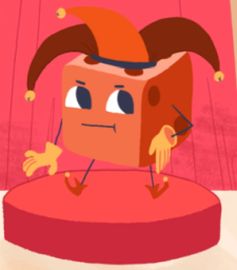
Finally we have the Jester, the game's "secret" class which has to be unlocked through playing the game (although this is simple for anyone to do simply by using the other characters). The Jester has another unique gameplay mechanic in which he uses a deck of cards - cards which still require dice to play them though! Unlike the other classes, the Jester has effectively unlimited inventory space and can take as many cards as the player desires without running out of room. Unsurprisingly the starting deck is pretty terrible and the player will want to supplement it with better cards over the course of the dungeon. The Jester holds three cards at a time and has the ability to discard paired cards to cycle through the deck faster; the player can see the next three cards upcoming in the deck and therefore the goal is usually to cycle past the weaker cards by discarding them whenever possible. The Jester's limit break allows paired cards to be played for free rather than discarded, and the player can pull off some crazy combos by cycling through the whole deck when the limit break is active. The big weakness of the Jester is that he never gets more than three dice to use; we discovered through trial and error that this makes the "Duplicate" card the most important one in the Jester's deck since it effectively grants extra dice. More dice means more cards to play and stronger overall turns in combat.

In any case, the player chooses one of those six classes and then finds themselves dumped into the dungeon where they must battle their way to the finish or perish trying. Despite the randomness to the dice rolls in Dicey Dungeons, there's considerably less randomness to the creation of the dungeons themselves. Each dungeon will always have six floors and the same combination of monsters on each floor. There are always two Level 1 monsters on the first floor, three Level 2 monsters on the second floor, and so on. Players receive experience points equal to the level of each monster upon defeating them as well as receiving one coin regardless of the monster's level. The determinstic nature of the dungeons therefore means that the player will always level up at the same point in time on each run, at least if they're killing all the monsters (which they'll want to do). Leveling up grants a full health refill (which is badly needed) along with additional max HP and side perks depending on the class in question, often additional dice to roll or new equipment. Defeating every monster will level up your character right before the final boss which is handy for the full health refill.
There is a bit more randomness around the edges of how the dungeons are laid out. Players will always hit two Level 1 monsters on the first floor but which monster types those will be can come in several different types. (Unfortunately each monster always appears at the same level - a Wizard will always be Level 2 and never Level 1 or Level 3 - which cuts down on replayability by a good margin. This would have been a fairly easy stat tweak that I wish the developers had made.) Each class will also find equipment hidden in treasure chests along the way, shops where more equipment can be bought, apples for modest health refills on each floor, and occasionally anvils that allow existing equipment to be upgraded into stronger forms. Pathing through each floor is a simple task yet still an important decision; missing one of the apples because you fought the monsters in the wrong order can mean the difference between life and death. Treasure chests and shops and anvils tend to appear on the same floors over and over again across different runs of Dicey Dungeons and I wish once again that there was a bit more variability to the gameplay in this regard. (The first treasure chest that the Jester opens will always contain the Juggling Ball, for example; Liz and I started making jokes about this since the pattern always repeated.)

Therefore it's not the strategic aspects of this game that work the best but rather the tactical combat itself. There may only be about 35 different enemies to face in Dicey Dungeons but they prove to be a charming and challenging bunch that take genuine skill to defeat on the harder settings. I love the cartoony art style that permeates the character designs and brings out the tongue-in-cheek style of humor running through this game. Each of the six classes has their own set of equipment with minimal overlap between them and then the monsters all have their own unique attack patterns as well, which sometimes can be stolen away by the player as the Thief is doing in the above screenshot. There are a bunch of creative monster abilities ranging from simply hitting the player really hard (as the pictured Skeleton likes to do) to inflicting burning, freezing, shocking, or weakening status ailments. There are half a dozen bosses for the player to face at the end of each run, one of which will be selected randomly each time, and a final boss showdown with Lady Luck herself if the player can complete all 36 episodes across the six classes.
Dicey Dungeons lacks the replayability of games like FTL: Faster Than Light or Slay the Spire in terms of each individual character run. It makes up for this somewhat by having a series of different episodes for each character, six in total for each class. The first episode always has standard rules and then the next two have some kind of weird twist to the normal gameplay. The Warrior gets two Battle Axes but starts every turn Cursed in one of them, or there's an episode where the Jester gets all of the monster attacks added to his deck after every victorious combat (leading to an insanely bloated deck size if the player doesn't work to delete the incoming cards). The fourth episode is my favorite: standard rules but the monsters get 10% more health and all their abilities are upgraded, just as if an anvil were used to improve them. This variant is very tough but leads to some of the best gameplay. The fifth episode is notably easier, changing up what all the status ailments do, and then the sixth episode starts with standard rules and then adds additional random twists on each floor of the dungeon. There's even a Hard mode version of the sixth episode that adds the upgraded monster attacks from the fourth episode plus the additional rules added on each dungeon floor. Again, there's nowhere near as much content in this game as in some of its peers but the whole package is beautifully put together for a tiny indie game.
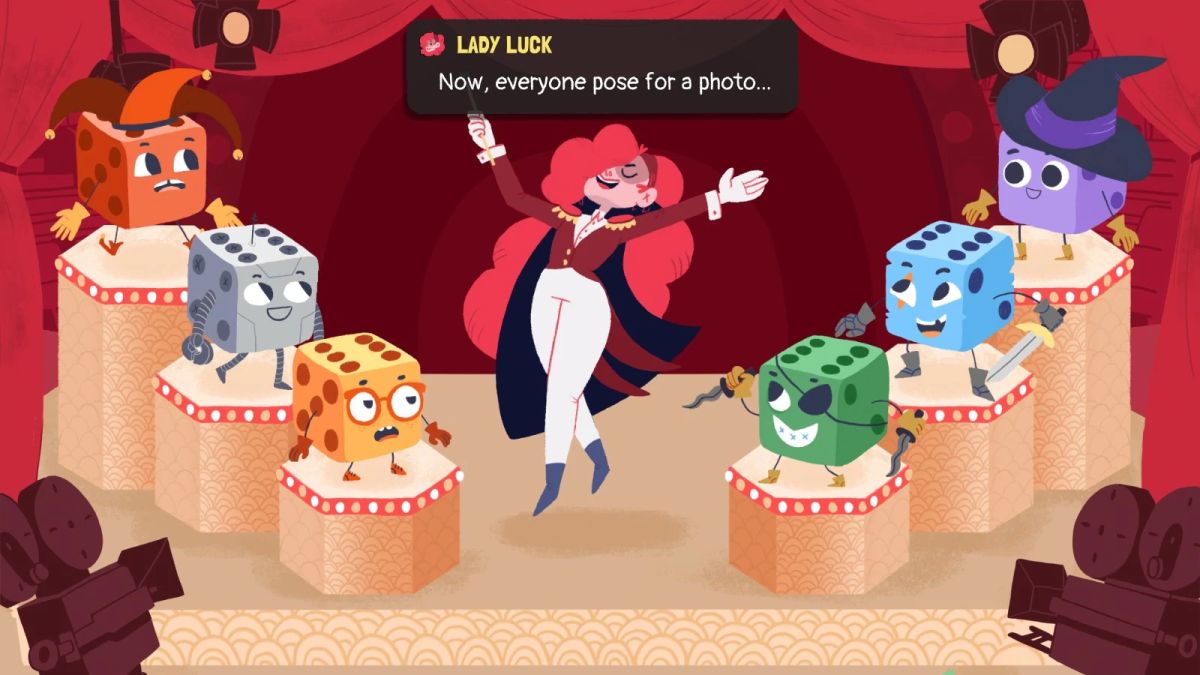
I bought Dicey Dungeons on a bit of whim since it was available as part of a Steam sale for all of three dollars. I wound up enjoying it enough to complete all of the episodes plus Hard mode for every class except the Witch (which required more attempts than I was willing to try). My wife Liz found herself hooked on this game as well and played through all of the classes too, with the two of us coming close to 100 hours invested into the title overall. Not bad for a modest indie game that cost all of three bucks! While Dicey Dungeons won't go down in history as an all-time classic, it's a fun side diversion that's easily worth the minimal asking price. Feel free to give this one a try if you enjoy games like FTL. Until next time, thanks as always for reading along.



